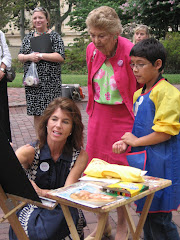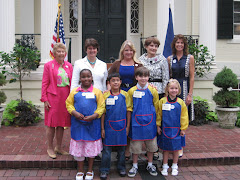George Gershwin and Maurice Ravel both had the opportunity to explore and experience each other’s home countries in the early twentieth century. By doing so, these composers expanded and altered their musical knowledge, which became greatly influenced by the exchange in cultures. Ravel toured America and became fascinated by jazz and improvisational styles, leaving the country with a fresh outlook on his musical gatherings. Although Gershwin felt homesick in Paris, the impact of his stay was felt profoundly through his compositions.
The Fairfax Symphony Orchestra will feature Chinese pianist Chu-Fang Huang, performing works by both composers in its performance on Saturday, November 21st, at George Mason University’s Center for the Arts at 8:00 p.m.
In 1920, E. Robert Schmitz, a Franco-American pianist, founded the Pro-Musica Society to support North American appearances of rising European composers and performers. Schmitz kept trying to convince Ravel to take on an American tour, funded by Pro-Musica. It took some time, and a $10,000 grant, but in 1928, Ravel kicked off his first American premiere. His tour started and ended in New York, and lasted for four months, covering cities across the United States and even venturing into Canada. He spent quite a great deal of time in New York, either performing or visiting the city, and traveled mostly by train to various towns.
His tour was a very memorable one. In between stops, Ravel visited towns like Omaha, and absorbed the jazz scenes. One time in Chicago, Ravel’s performance started late, but this was only because he could not find his shoes. Some nights he produced stellar performances, only to lack energy in a performance the next day. As a French man, Ravel laughed at the idea of the prohibition, and was happy enough that there were no laws against smoking cigarettes. What Ravel saw developing in the American music scene was jazz. Jazz music excited him, and he thought it would be best for Americans to continue to pursue this style of music.
During Ravel’s travels, he met Gershwin while in New York, where the two exchanged dialogue. Gershwin played for Ravel and apparently overwhelmed Ravel with his style and ability. Interestingly enough, when Gershwin visited Paris and asked to study from Ravel, Ravel turned him away. Ravel’s experience in the United States obviously impacted his appreciation for Gershwin’s style and musicality, and he felt he had nothing more to teach him.
Gershwin left France with one impactful thing, his legendary composition, An American in Paris. As he created this piece, he fed off of the energy of the Parisian streets, struck by sensory overload. Gershwin used this method of responding to his environmental surroundings while creating Rhapsody in Blue. He traveled by train as well and heard music through noise, whether it was in the rhythm of the train’s movement or the atmosphere of a city. Through these experiences, and with his musical knowledge, Gershwin produced Rhapsody in Blue, a classic, well-loved jazz piece.
Join the Fairfax Symphony Orchestra and Chu-Fang Huang at George Mason University’s Center for the Arts this Saturday at 8:00 p.m. to hear the works by these composers for yourself.
Information source: http://www.maurice-ravel.net
.jpg)
.jpg)
.jpg)
0 comments:
Post a Comment